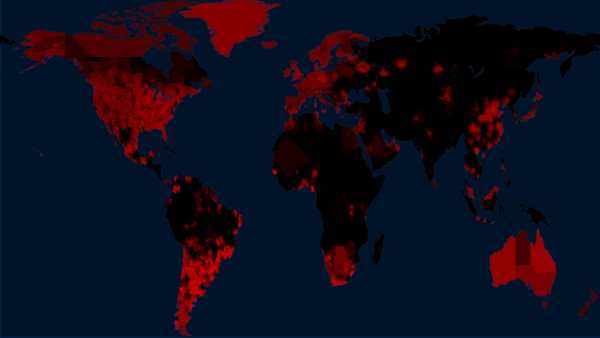Notice: this Wiki will be going read only early in 2024 and edits will no longer be possible. Please see: https://gitlab.eclipse.org/eclipsefdn/helpdesk/-/wikis/Wiki-shutdown-plan for the plan.
Difference between revisions of "About STEM"
(New page: A Global H1N1 Simulation. What is the '''Spatiotemporal Epidemiological Modeler''' ('''STEM''')? The Spatiotemporal Epidemiological Modeler (...) |
|||
| Line 1: | Line 1: | ||
| − | |||
[[Image:GlobalH1N1As.jpg|frame|right|600px|A Global H1N1 Simulation.]] | [[Image:GlobalH1N1As.jpg|frame|right|600px|A Global H1N1 Simulation.]] | ||
| + | |||
| + | '''[http://wiki.eclipse.org/index.php/STEM back to STEM Contents Page]''' | ||
| + | |||
| + | == About STEM == | ||
| + | |||
What is the '''Spatiotemporal Epidemiological Modeler''' ('''STEM''')? | What is the '''Spatiotemporal Epidemiological Modeler''' ('''STEM''')? | ||
The Spatiotemporal Epidemiological Modeler (STEM) tool is designed to help scientists and public health officials create and use spatial and temporal models of emerging infectious diseases. These models can aid in understanding and potentially preventing the spread of such diseases. | The Spatiotemporal Epidemiological Modeler (STEM) tool is designed to help scientists and public health officials create and use spatial and temporal models of emerging infectious diseases. These models can aid in understanding and potentially preventing the spread of such diseases. | ||
Revision as of 11:16, 20 January 2012
About STEM
What is the Spatiotemporal Epidemiological Modeler (STEM)? The Spatiotemporal Epidemiological Modeler (STEM) tool is designed to help scientists and public health officials create and use spatial and temporal models of emerging infectious diseases. These models can aid in understanding and potentially preventing the spread of such diseases.
Policymakers responsible for strategies to contain disease and prevent epidemics need an accurate understanding of disease dynamics and the likely outcomes of preventive actions. In an increasingly connected world with extremely efficient global transportation links, the vectors of infection can be quite complex. STEM facilitates the development of advanced mathematical models, the creation of flexible models involving multiple populations (species) and interactions between diseases, and a better understanding of epidemiology.
How does it work? The STEM application has built in Geographical Information System (GIS) data for almost every country in the world. It comes with data about country borders, populations, shared borders (neighbors), interstate highways, state highways, and airports. This data comes from various public sources.
STEM is designed to make it easy for developers and researchers to plug in their choice of models. It comes with spatiotemporal Susceptible/Infectious/Recovered (SIR) and Susceptible/Exposed/Infectious/Recovered (SEIR) models pre-coded with both deterministic and stochastic engines.
The parameters in any model are specified in XML configuration files. Users can easily change the weight or significance of various disease vectors (such as highways, shared borders, airports, etc). Users can also create their own unique vectors for disease. Further details are available in the user manual and design documentation.
The original version of STEM was available for downloading on IBM's Alphaworks. It contained easy to follow instructions and many examples (various diseases and maps of the world).
New developers who want to work on STEM can find useful tools, conventions, and design information in the Welcome STEM Developers article.
The STEM code repository is hosted on the Eclipse Technology code repository.

